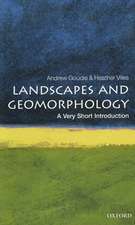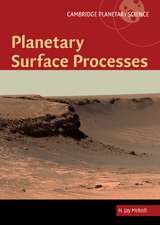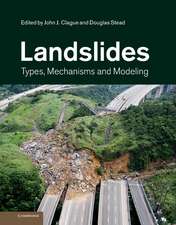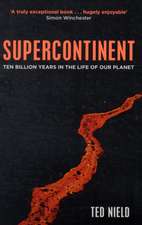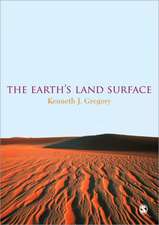Principles of Geology 3 Volume Paperback Set: An Attempt to Explain the Former Changes of the Earth's Surface, by Reference to Causes now in Operation: Cambridge Library Collection - Earth Science
Autor Charles Lyellen Limba Engleză Quantity pack – 23 sep 2009
Din seria Cambridge Library Collection - Earth Science
- 23%
 Preț: 720.53 lei
Preț: 720.53 lei - 19%
 Preț: 559.53 lei
Preț: 559.53 lei - 23%
 Preț: 1044.28 lei
Preț: 1044.28 lei -
 Preț: 347.50 lei
Preț: 347.50 lei - 19%
 Preț: 533.47 lei
Preț: 533.47 lei -
 Preț: 386.22 lei
Preț: 386.22 lei -
 Preț: 375.23 lei
Preț: 375.23 lei -
 Preț: 277.67 lei
Preț: 277.67 lei - 19%
 Preț: 435.37 lei
Preț: 435.37 lei -
 Preț: 329.56 lei
Preț: 329.56 lei -
 Preț: 329.98 lei
Preț: 329.98 lei -
 Preț: 331.70 lei
Preț: 331.70 lei -
 Preț: 257.89 lei
Preț: 257.89 lei - 19%
 Preț: 461.39 lei
Preț: 461.39 lei -
 Preț: 278.81 lei
Preț: 278.81 lei -
 Preț: 368.48 lei
Preț: 368.48 lei -
 Preț: 533.33 lei
Preț: 533.33 lei -
 Preț: 516.01 lei
Preț: 516.01 lei -
 Preț: 468.66 lei
Preț: 468.66 lei -
 Preț: 464.07 lei
Preț: 464.07 lei -
 Preț: 330.93 lei
Preț: 330.93 lei -
 Preț: 244.05 lei
Preț: 244.05 lei -
 Preț: 531.96 lei
Preț: 531.96 lei -
 Preț: 367.71 lei
Preț: 367.71 lei -
 Preț: 337.18 lei
Preț: 337.18 lei -
 Preț: 330.93 lei
Preț: 330.93 lei -
 Preț: 256.44 lei
Preț: 256.44 lei -
 Preț: 331.89 lei
Preț: 331.89 lei -
 Preț: 418.32 lei
Preț: 418.32 lei -
 Preț: 475.61 lei
Preț: 475.61 lei -
 Preț: 465.60 lei
Preț: 465.60 lei -
 Preț: 353.69 lei
Preț: 353.69 lei -
 Preț: 356.58 lei
Preț: 356.58 lei -
 Preț: 330.75 lei
Preț: 330.75 lei -
 Preț: 315.54 lei
Preț: 315.54 lei -
 Preț: 314.23 lei
Preț: 314.23 lei -
 Preț: 420.82 lei
Preț: 420.82 lei
Preț: 1015.84 lei
Preț vechi: 1319.28 lei
-23% Nou
Puncte Express: 1524
Preț estimativ în valută:
194.44€ • 211.28$ • 163.44£
194.44€ • 211.28$ • 163.44£
Carte disponibilă
Livrare economică 31 martie-14 aprilie
Preluare comenzi: 021 569.72.76
Specificații
ISBN-13: 9781108001342
ISBN-10: 1108001343
Pagini: 1999
Ilustrații: 1
Dimensiuni: 137 x 215 x 90 mm
Greutate: 2.22 kg
Editura: Cambridge University Press
Colecția Cambridge University Press
Seria Cambridge Library Collection - Earth Science
Locul publicării:Cambridge, United Kingdom
ISBN-10: 1108001343
Pagini: 1999
Ilustrații: 1
Dimensiuni: 137 x 215 x 90 mm
Greutate: 2.22 kg
Editura: Cambridge University Press
Colecția Cambridge University Press
Seria Cambridge Library Collection - Earth Science
Locul publicării:Cambridge, United Kingdom
Cuprins
Volume I: 1. Geology defined; 2. Oriental cosmogony; 3. Arabian writers of the tenth century; 4. Werner's application of geology to the art of mining; 5. Review of the causes which have retarded the progress of geology; 6. Proofs that the climate of the northern hemisphere was formerly hotter; 7. On the causes of vicissitudes in climate; 8. Geological proofs that the geographical features of the northern hemisphere were such as would give rise to an extremely hot climate; 9. Theory of the progressive development of organic life considered; 10. Division of the subject into changes of the organic and inorganic world; 11. Action of running water, continued; 12. Difference between the transporting power of springs and rivers; 13. Reproductive effects of running water; 14. Oceanic deltas; 15. Destroying and transporting effects of tides and currents; 16. Action of tides and currents, continued; 17. Reproductive effects of tides and currents; 18. Division of igneous agents into the volcano and the earthquake; 19. History of the volcanic eruptions in the district of Naples; 20. Dimensions and structure of the cone of Vesuvius; 21. External physiognomy of Etna; 22. Volcanic Archipelagos; 23. Earthquakes and their effects; 24. Earthquake in Calabria, February 5th, 1783; 25. Earthquakes of the eighteenth century, continued; 26. Magnitude of the subterranean changes produced by earthquakes at great depths below the surface; Volume II: Preface; 1. Changes of the organic world; 2. Recapitulation of the arguments; 3. Variability of a species; 4. Consideration of the question whether species have a real existence; 5. Laws which regulate the geographical distribution of species; 6. Geographical distribution of animals; 7. Geographical distribution and migration of fish; 8. Theories respecting the original introduction of species; 9. The circumstances which constitute the stations of animals are changeable; 10. Influence of organic causes in changing the habitations of species; 11. Theory of the successive extinction of species; 12. Effects produced by the powers of vitality; 13. Effects produced by the action of animals and vegetable life; 14. Imbedding of organic remains in alluvium and the ruins caused by landslips; 15. Imbedding of organic remains in subaqueous deposits; 16. Imbedding of the remains of man and his works in subaqueous strata; 17. Imbedding of aquatic species in subaqueous strata; 18. Formation of coral reefs; Volume III: 1. Connexion between the subjects treated of in the former parts of this work and those to be discussed in the present volume; 2. Arrangement of the materials composing the earth's crust; 3. Different circumstances under which the secondary and tertiary formations may have originated; 4. Chronological relations of mineral masses the first object in geological classification; 5. Classification of tertiary formations in chronological order; 6. Newer Pliocene formations; 7. Marine and volcanic formations at the base of Etna; 8. Speculations on the origin of the Val del Bove on Etna; 9. Origin of the newer Pliocene strata of Sicily; 10. Tertiary formations of Campania; 11. Newer Pliocene freshwater formations; 12. Geological monuments of the older Pliocene period; 13. Crag of Norfolk and Suffolk; 14. Volcanic rocks of the older Pliocene period; 15. Miocene period; 16. Miocene alluviums; 17. Eocene period; 18. Marine formations of the Eocene period; 19. Volcanic rocks of the Eocene period; 20. Eocene formations, continued; 21. Denudation of secondary strata during the deposition of the English Eocene formations; 22. Denudation of the Valley of the Weald, continued; 23. Secondary formations; 24. On the relative antiquity of different mountain-chains; 25. On the rocks usually termed 'primary'; 26. On the stratified rocks usually called 'primary'.
Descriere
In 1830–33, Charles Lyell laid the foundations of evolutionary biology with Principles of Geology, a pioneering book that Charles Darwin took with him on the Beagle.

